Vultures are incredibly distinctive birds with their bald heads and scavenging nature. Despite being more commonly associated with death, they are actually some of the most important and unique birds living in the world. So join us as we take a deeper look at them with 10 incredible vulture facts!
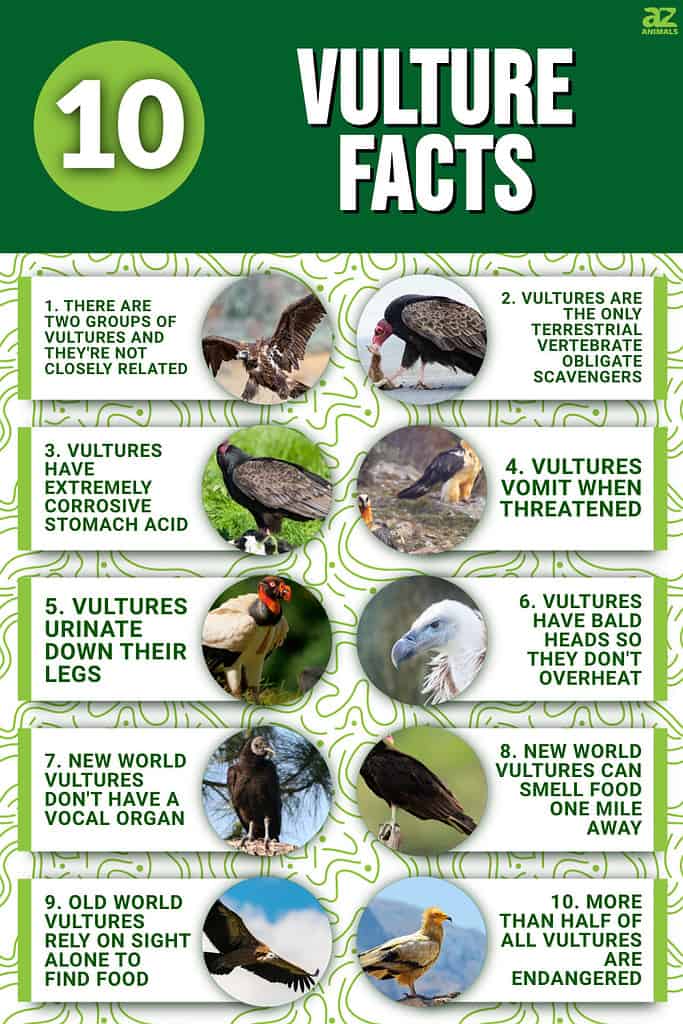
1. There are Two Groups of Vultures and they’re Not Closely Related
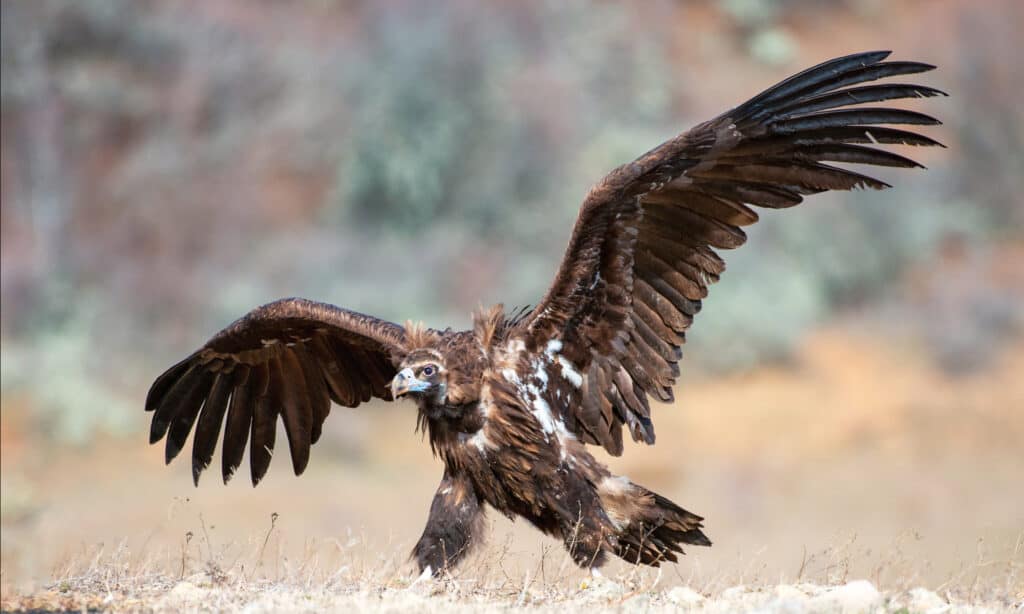
The two groups of vultures share similar traits due to convergent evolution
©WildlifeWorld/Shutterstock.com
There are 23 living species of vulture in the world today – Old World and New World. Old World vultures live in Africa, Asia, and Europe and there are 16 species. These all belong to the Accipitridae family group which includes buzzards, eagles, kites, and hawks. There are 7 species of New World vultures and they belong to the Cathartidae family group and live in the Americas. Despite all being coined as “vultures”, New World and Old World vultures are not closely related. Instead, they share some similar traits as a result of convergent evolution. Convergent evolution is when unrelated species independently evolve similar characteristics – often in completely different time periods.
2. Vultures are the Only Terrestrial Vertebrate Obligate Scavengers

Vultures are the only land-based vertebrate who feed almost exclusively on dead meat
©hubert999/Shutterstock.com
The one thing that vultures are best known for is for being scavengers. In fact, they are not just any scavengers – they are obligate scavengers. Being an obligate scavenger means that they rely almost entirely on dead animals for their food. Vultures occasionally prey on sick or wounded animals but rarely ever attack healthy animals. However, vultures are the only land-based vertebrate scavengers. It might seem surprising since hyenas also have a reputation for being scavengers, but they actually supplement their diet by actively catching prey such as antelope. The only other terrestrial scavengers are invertebrates such as blowflies and burrowing beetles.
3. Vultures have Extremely Corrosive Stomach Acid
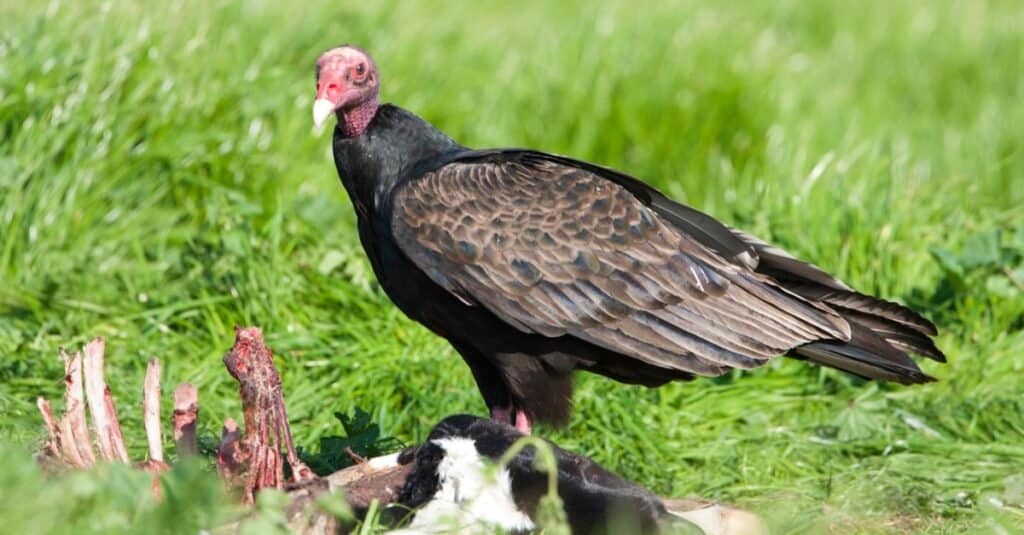
Vultures’ stomachs have the lowest pH of all animals.
©Agami Photo Agency/Shutterstock.com
As scavengers vultures eat all manner of dead and rotting carcasses. With this in mind, you’re probably wondering how they don’t end up sick, right? Well, the secret is in their stomach acid. This is because vultures stomach acid is highly acidic which allows them to safely digest bacteria which would be lethal to other scavengers – such as anthrax, botulium toxin, and hog cholera. This makes vultures incredibly important as they are able to safely remove dangerous bacteria from the environment. With a pH of 1.0, vultures’ stomachs have the lowest pH of any other animal in the world. As it is highly acidic it is also extremely corrosive. This is particularly useful for vultures as they also consume bones, so their stomach acid is able to break them down easily.
4. Vultures Vomit when Threatened
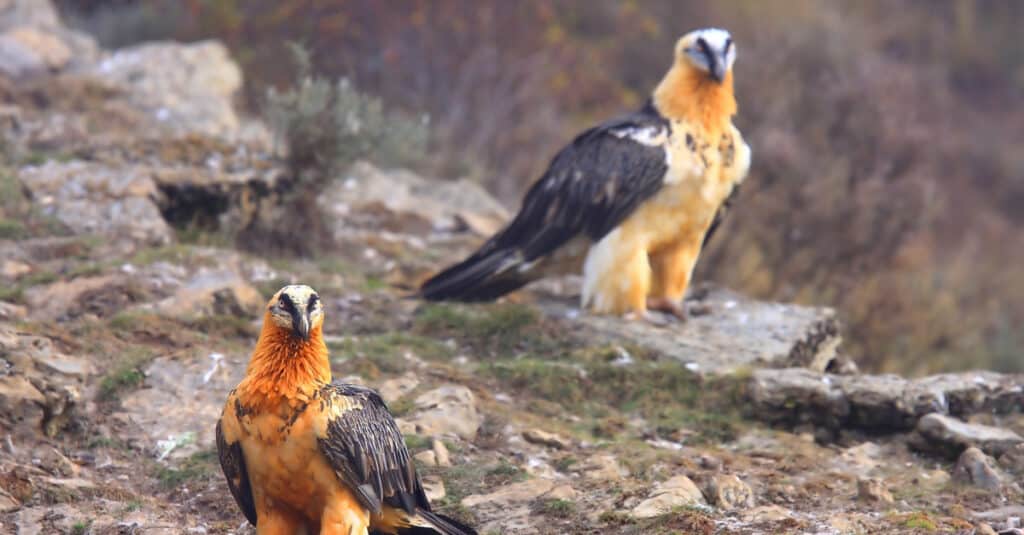
Vultures vomit when threatened so they can take off into the air quicker.
©ESCOCIA/Shutterstock.com
If you accidentally disturb a vulture then the last thing you expect is for it to vomit at you, yet that is exactly what vultures do when they are threatened. Contrary to the common belief, they actually don’t “projectile vomit” though. However, when they vomit they’re not doing it just for the sake of it. Vultures actually vomit when they’re threatened so that they are lightening their load ready for a faster take off into the air to escape. It also has the added benefit of distracting the would-be predator with the remains of the meal that they have just consumed.
5. Vultures Urinate Down their Legs
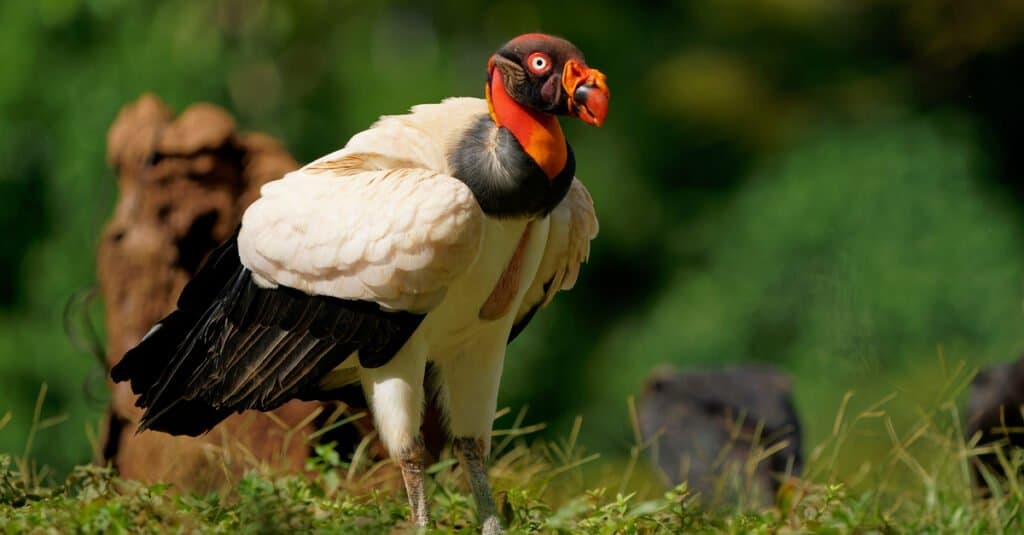
Vultures pee down their legs for multiple reasons.
©Martin Pelanek/Shutterstock.com
As disgusting as it sounds, vultures really do urinate right down their legs, but it actually has a purpose. When vultures are eating they often walk in and around rotting carcasses which contain lots of bacteria as we’ve mentioned above, and all of this can accumulate on their legs. By urinating down their legs – a process called urohidrosis – they can kill this bacteria with their urine. The other reason that vultures urinate down their legs is to help cool themselves down while they are in the blistering heat. This is because it actually cools them down as it evaporates.
6. Vultures have Bald Heads so they don’t Overheat
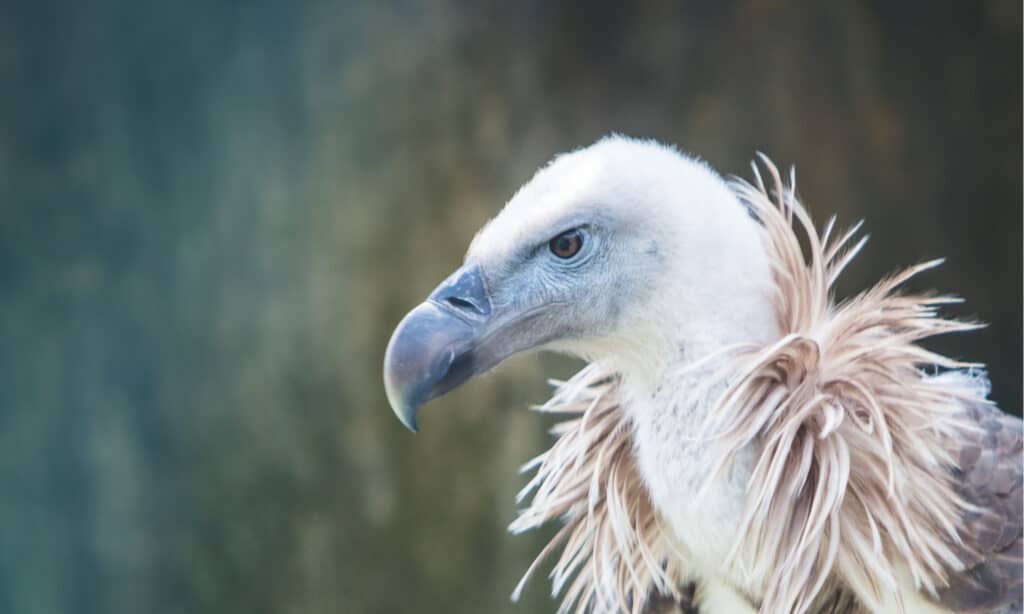
Most vultures have bald heads so that they can cool down easily
©tamaragobbettoph/Shutterstock.com
Vultures have a distinctive appearance with their bald heads and sometimes bald necks. It was originally thought that vultures had bald heads so that they didn’t have to worry about their feathers getting covered with blood and rotting flesh as they feast on their meal. Although it’s an entirely reasonable assumption to make, research has found that this is actually not the case. Instead, vultures have bald heads so that they don’t overheat. When it is hot they stretch their head and neck out and open their wings. This allows them to lose as much heat as possible. This is particularly important for some African species which live in climates where the summer temperatures are in excess of 40°C.
7. New World Vultures don’t have a Vocal Organ
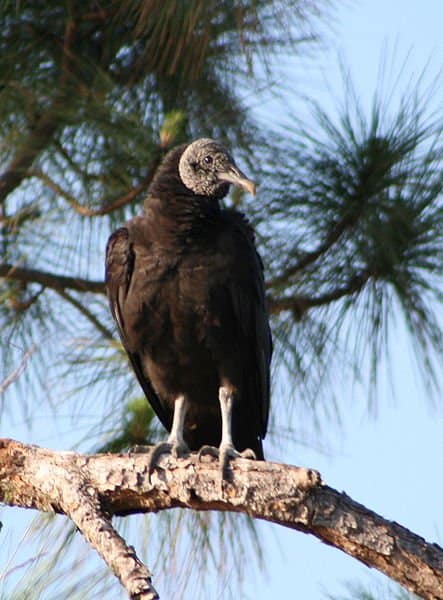
New World vultures are basically silent compared to other birds.
©mauricholas / CC BY-SA 2.0 – License
When we think of birds we assume that they can all make a sound and we think of the vast array of chirps, screeches, and songs that they can make – yet New World vultures can barely make a sound at all. Although birds have larynxes the larynx doesn’t produce their sound. Instead, the organ that they use to produce sound is called the syrinx and is located at the base of the trachea. New World vultures do not have this vocal organ so they are unable to produce a proper sound. Instead, they can only produce a limited amount of hissing and grunting sounds.
8. New World Vultures Can Smell Food One Mile Away
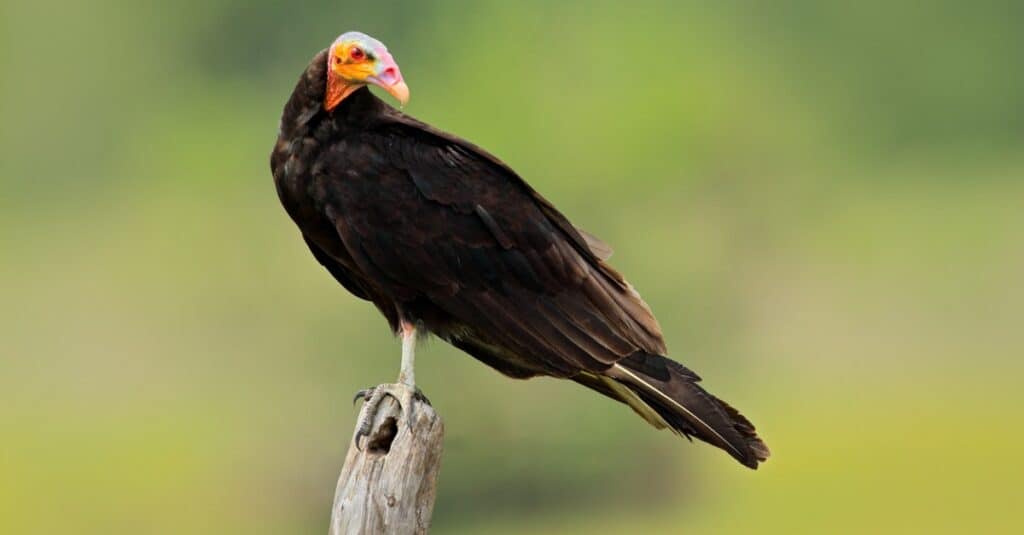
New World vultures have a better sense of smell than Old World vultures.
©iStock.com/Ondrej Prosicky
There are many animals in the world which posses an incredible sense of smell. However, few would expect a bird to be able to smell food from distances as far as one mile away. Yet that is exactly what New World vultures can do. Smells are detected using the olfactory bulb and New World vultures have a far superior sense of smell to any other bird. In fact, of all the the New World vultures, the turkey vulture is credited with having the most advanced and finely-tuned sense of smell of any bird in the world. Studies have found that these vultures have an olfactory bulb that is around four times bigger than that of other vultures.
9. Old World Vultures Rely on Sight Alone to Find Food
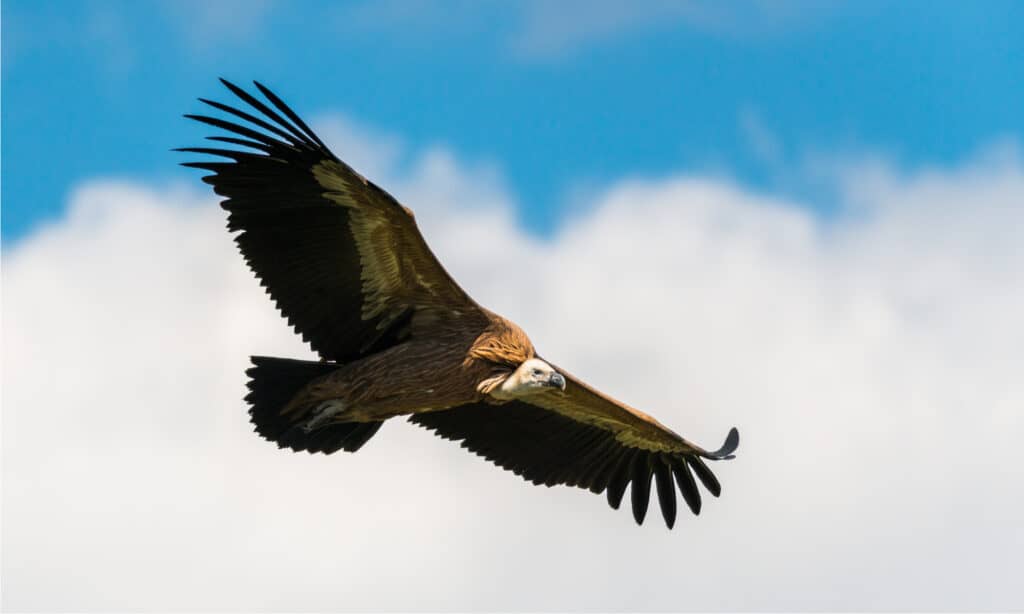
Some vultures rely on sight alone to find food.
©Jon_Clark/Shutterstock.com
Following on from the point above, Old World vultures are almost the complete opposite of New World vultures. Old World vultures don’t have the same highly developed olfactory bulb which means that they have a poor sense of smell. Therefore, they have to rely entirely on sight alone to find their food. In open habitats then it is fairly easy for them to spot a stricken animal down on the ground while they soar high above. However, in more covered habitats it can be incredibly difficult for them. This is why Old World vultures tend to live in open habitats rather than forests.
10. More than Half of all Vultures are Endangered
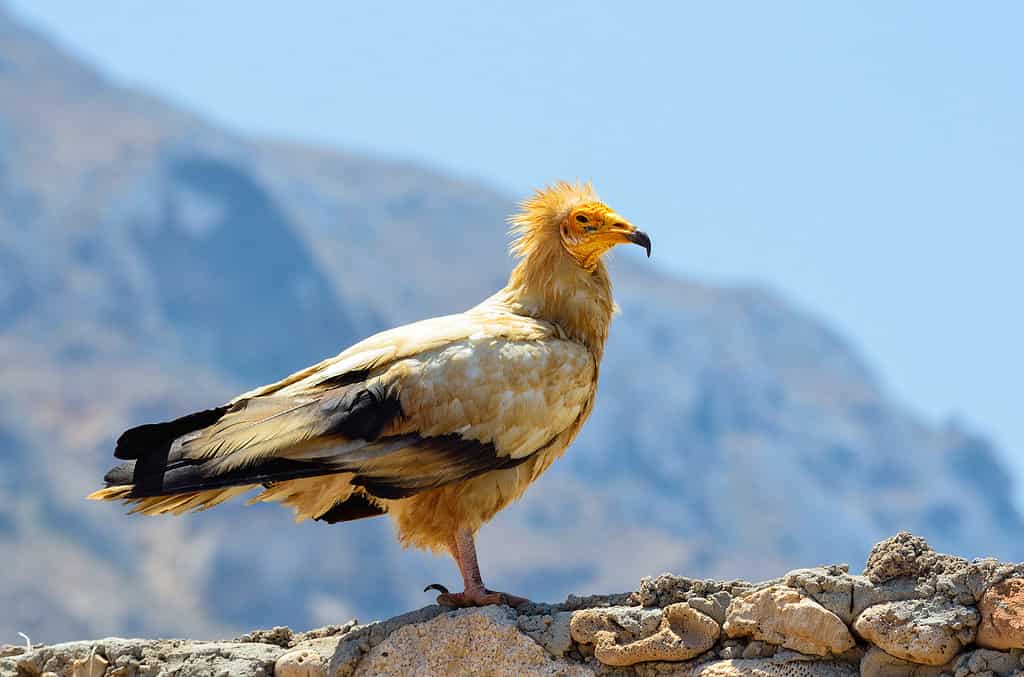
The numbers for vulture populations are very low.
©irinabal18/ via Getty Images
Of the 23 species of vultures, more than half of them are endangered in some way, with four of them being critically endangered. One of the most seriously threatened species is the Ruppell’s vulture of which there are only around 22,000 birds left. The main reasons vultures are under threat are habitat loss and poisoning. Many vultures are killed after eating carcasses which have been poisoned by poachers while others have died from residual veterinary drugs in the animals they eat. The dramatically declining population of vultures is a serious problem as vultures are incredibly important animals. In areas where they are declining there is now a surge in the amount of pests and disease. This is because, as we’ve already explained, vultures remove bacteria from the environment, but without them the bacteria can spread. The numbers of other scavenging animals also increases and they then spread diseases.
The photo featured at the top of this post is © Carmine Arienzo/Shutterstock.com
Thank you for reading! Have some feedback for us? Contact the AZ Animals editorial team.






